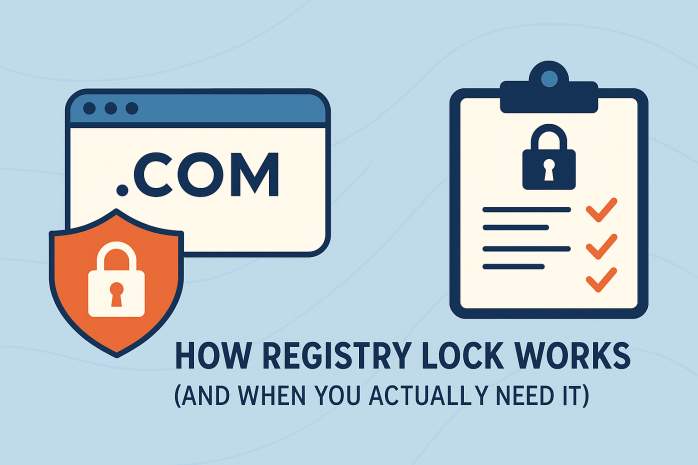How Registry Lock Works (and When You Actually Need It) Published: 22 Oct, 2025

Most domain owners are familiar with client-side locks like clientTransferProhibited, which prevent unauthorized transfers from your registrar. But fewer know about Registry Lock—a powerful, registrar-independent safeguard available for high-value domains.
Unlike regular domain locks, Registry Lock is enforced at the registry level, meaning even if your registrar is compromised, critical changes to your domain are blocked unless verified through an out-of-band process.
What Is Registry Lock?
Registry Lock is a mechanism supported by some top-level domains (not all) where specific domain operations—such as DNS record changes, contact info updates, or deletion—are prohibited unless unlocked via manual intervention.
It usually requires:
-
Human verification (phone call, passphrase, multi-step confirmation)
-
Manual unlocking from both registrar and registry
-
Re-locking after changes are completed
Example:
.comand.netdomains can be protected via Verisign's Registry Lock service. ccTLDs may have similar offerings (e.g.,.se,.nl,.uk) with different policies.
What It Protects Against
Registry Lock protects against:
-
Domain hijacking (even if your registrar account is breached)
-
DNS hijacks via unauthorized nameserver updates
-
Deletion or unauthorized transfers of mission-critical domains
-
Insider threats at the registrar level
It's especially recommended for:
-
Banking and finance domains
-
Government websites
-
Major e-commerce brands
-
Domains handling OAuth, auth flows, or DNS-based validation
Limitations and Trade-offs
-
Not available for all TLDs
-
Requires manual approval for changes, which adds delay
-
Usually incurs additional fees
-
Not manageable via API or regular registrar dashboard
For everyday domains, it's overkill. But if downtime, takeover, or DNS manipulation would be catastrophic, Registry Lock is a security layer worth considering.
Check Your Domain Lock Status
Use our WHOIS Lookup Tool and look for registry-level statuses like:
serverDeleteProhibited serverTransferProhibited serverUpdateProhibited
These flags indicate Registry Lock (not to be confused with client* statuses which are registrar-level only).
Pro Tip:
Some registrars advertise “domain lock” without distinguishing client-side vs registry-level protection. Always confirm what level of lock is actually enforced.